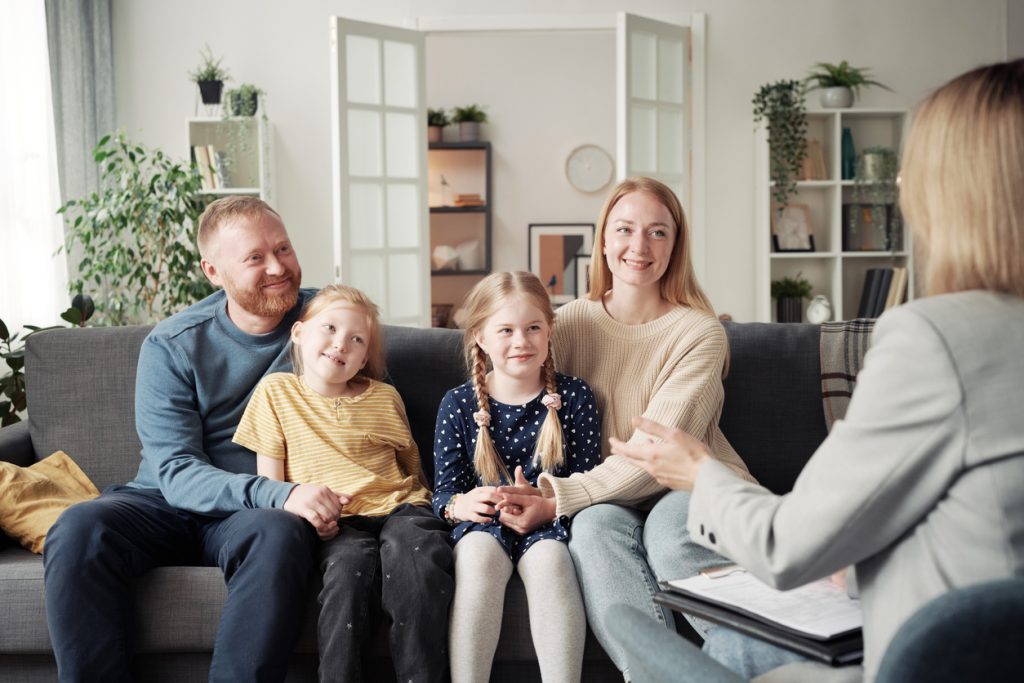Navigating family mediation in California demands a high standard of communication. Divorce, child custody disputes, and asset division often generate heightened emotions and misunderstandings. Effective Communication During Family Mediation in California is not merely about speaking clearly, but about fostering mutual understanding, trust, and respect between parties. Central to this process is active listening, a skill that enables participants to move beyond positional arguments and uncover each other’s interests and needs.
The Context of Family Mediation in California
Family mediation in California provides an alternative dispute resolution method designed to help families address conflicts outside the adversarial court system. Guided by California family law and governed by the standards set by the California Courts, mediation focuses on voluntary cooperation, confidentiality, and self-determination. In such a dynamic, effective communication during family mediation in California serves not just as a procedural necessity, but as a foundation that shapes every mediation outcome.
Why Active Listening Matters in Family Mediation
Active listening represents far more than hearing spoken words. It is an intentional process that includes giving undivided attention, responding without judgment, and reflecting understanding. In the emotionally charged environment of family mediation, active listening helps to diffuse tension, clarify intentions, and reveal underlying interests that standard communication might obscure. As parties navigate difficult decisions about shared parenting, finances, and future relationships, active listening supports the creation of agreements tailored to both parties’ real concerns. Without this skill, misunderstandings and resentments often build, making cooperation and compromise increasingly elusive.
Core Components of Effective Communication During Family Mediation in California
The Interplay of Verbal and Nonverbal Cues
Nonverbal cues—including body language, eye contact, and posture—play an important role in effective communication during family mediation in California. Active listening is closely linked to these subtle signals. A neutral, open posture, nodding in agreement, or attentive facial expressions can indicate understanding even before a verbal response is given. The California courts recognize that communication failures often manifest through conflicting messages between what is said and how it is conveyed, making awareness of these cues vital for successful mediation.
Clarification, Reflection, and Reframing Techniques
During family mediation, misunderstandings can easily arise from assumptions or emotionally charged language. One key practice within active listening is clarifying by asking open-ended questions that allow parties to elaborate on their statements. Reflection involves repeating or summarizing what another person has said, confirming mutual understanding. Reframing takes tense or negative statements and transforms them into constructive dialogue, focusing on solutions rather than blame. By employing these strategies, mediators and participants foster effective communication during family mediation in California that is resilient to misinterpretation and escalation.

Emotional Regulation and Empathy’s Role
Family law disputes are rarely devoid of strong feelings. Parties may feel anger, sadness, or betrayal during the mediation process. Active listening is a conduit for empathy; showing real understanding of another party’s perspective often helps to reduce defensiveness while encouraging honest disclosure. Emotional regulation, supported by active listening, allows each participant to maintain focus on problem-solving rather than being drawn into reactive responses. This process is critical for effective communication during family mediation in California, as it cultivates a sense of safety and respect even when opinions diverge.
Obstacles to Effective Communication During Family Mediation in California
Common Barriers to Active Listening
Despite best intentions, parties may enter mediation with barriers that impede communication. These obstacles include prejudgments, distractions, and the pressure of adversarial history. Sometimes, participants focus on crafting their next retort rather than truly understanding the other’s position. Addressing these hindrances is essential for facilitating effective communication during family mediation in California.
Legal and Procedural Factors
California has detailed procedural requirements for family mediation. Parties must navigate mandatory disclosures, legal definitions, and statutory timelines all while communicating across personal divides. The formality of the mediation setting, or fear of potential legal consequences, can add pressure that interferes with active listening. For a comprehensive understanding of mediation guidelines, the California Courts Self-Help Guide provides thorough information on the expectations and rights within mediation, helping participants align their communication practices with legal standards (https://www.courts.ca.gov/selfhelp-mediation.htm).
Cultural and Linguistic Challenges
California’s cultural diversity means mediation often involves individuals from various backgrounds and languages. Misunderstandings can occur due to linguistic nuances or different communication styles. Mediators attuned to cultural contexts integrate techniques that promote equity in participation, further supporting effective communication during family mediation in California.
Active Listening in Action: Practical Techniques for Effective Family Mediation
Setting the Foundation: Environment and Preparation
Preparation is key to maximizing communication. Mediation should occur in a neutral, comfortable setting with privacy and minimal distractions. Parties are encouraged to come with open minds, ready to both express their concerns and listen to the other side. Establishing ground rules—such as speaking respectfully, listening without interruption, and addressing the mediator as needed—lays a strong foundation for effective communication during family mediation in California.
Encouraging Open Dialogue with Active Listening
The mediator’s role is not to advocate for one side but to facilitate constructive dialogue. Mediators model active listening, paraphrasing statements and checking for understanding before building on what has been said. When parties mirror these behaviors, they are more likely to achieve mutual understanding.
For example, a mediator might say, “It sounds like you’re feeling overwhelmed by the current visitation schedule. Can you share more about which aspects are most challenging?” This approach invites honest expression and demonstrates that the party’s concerns are taken seriously. As the other party listens and reflects back their understanding, the environment becomes more conducive to compromise.

Dealing with Difficult Emotions and High Conflict
Not all mediation encounters proceed smoothly. When emotions run high, active listening remains vital. Instead of escalating arguments, the mediator or party can validate emotions, such as saying, “I understand that this is a very stressful situation for you.” This validation does not equate to agreement but underscores a mutual respect necessary for effective communication during family mediation in California. Mediators often employ “time-outs” or short breaks to allow emotions to settle before returning to dialogue, ensuring productive communication continues.
The Impact of Active Listening on Family Mediation Outcomes
Building Trust and Promoting Settlement
Active listening builds trust, which is fundamental to effective communication during family mediation in California. When parties believe their voices are heard, they display greater willingness to consider creative solutions and compromise. Research shows that settlements reached through mediation are more durable when both parties have felt genuinely listened to during the process.
Minimizing Misunderstandings and Reducing Conflict
A significant benefit of active listening is the reduction of misunderstandings. By confirming interpretations and paraphrasing concerns, mediation participants avoid the “he said, she said” dynamics that often derail negotiation efforts. This results in clearer agreements and stronger co-parenting or post-divorce relationships moving forward.
Empowerment and Self-Determination
The California court system emphasizes self-determination in family law mediation. Through active listening, parties are empowered to articulate their own needs and interests. This sense of agency supports more personalized and effective resolutions, compared to outcomes imposed by a judge. The focus on effective communication during family mediation in California therefore aligns not only with legal requirements, but also with principles of fairness and autonomy.
Active Listening Skills for Family Mediation Participants
Asking Clarifying Questions
One of the core techniques in mediation is asking open-ended questions that require elaboration rather than simple yes/no responses. This fosters deeper understanding and reveals underlying needs that may not be initially expressed. Each time a party seeks clarification, they demonstrate a commitment to effective communication during family mediation in California.
Paraphrasing and Summarizing
Repeating the speaker’s points in one’s own words and seeking confirmation ensures messages have been correctly interpreted. For instance, stating, “Let me make sure I understand—you’re worried about the transition between households causing stress for the children, is that correct?” validates the speaker and reduces potential conflict.
Managing Body Language and Nonverbal Communication
Maintaining consistent eye contact, open body posture, and attentive gestures signals engagement and builds rapport. These nonverbal cues reinforce the verbal aspects of effective communication during family mediation in California, making the speaker feel heard and respected.
Withholding Judgment and Reactions
Active listening involves deliberately suspending judgment and avoiding premature responses. Instead of offering immediate solutions or rebuttals, effective communicators pause to consider the full impact of what has been shared. This technique contributes significantly to effective communication during family mediation in California, and keeps the conversation productive rather than adversarial.
The Mediator’s Role in Facilitating Active Listening
Neutral Third-Party Guidance
Mediators are trained to facilitate effective communication during family mediation in California by promoting an environment where all voices are given due weight. They intervene strategically, steering the conversation away from unhelpful blaming or accusations and towards interests and solutions.
Managing Power Imbalances
Power imbalances frequently arise during mediation, especially in situations involving complex family dynamics or histories of conflict. Mediators are alert to these dynamics and use active listening to ensure less vocal parties are heard. They may, for example, directly ask a quieter participant for their views or clarify points that appear misunderstood, upholding the standard of effective communication during family mediation in California.
Facilitating Agreement Drafting
As mediation progresses, the mediator summarizes points of agreement and remaining differences. These summaries, based on active listening, form the backbone of draft agreements. By reflecting back the parties’ own words and concerns, mediators reinforce the principles of effective communication during family mediation in California while helping to finalize settlements.

Legal Considerations: Communication Protocols in California Family Mediation
Confidentiality and Legal Standards
Family mediation in California is governed by strict confidentiality rules, as outlined by the California Evidence Code Section 1119. Communications made for the purpose of mediation are privileged and cannot generally be used as evidence in court. Within this framework, parties are encouraged to speak freely, knowing that their efforts at effective communication during family mediation in California are legally protected.
Court-Mandated Mediation and Participation Requirements
California law often requires parties in child custody and visitation disputes to attempt mediation before court intervention. The court expects both parties to engage in good faith and participate actively. In practice, this means demonstrating not just willingness to talk, but a commitment to active listening—the very hallmark of effective communication during family mediation in California. Information on these legal expectations can be found in the official California Courts Family Mediation Guide.
Long-Term Advantages of Active Listening Beyond Mediation
Sustaining Cooperation After Mediation
The impact of active listening does not end when mediation is over. The habits of effective communication during family mediation in California carry into co-parenting, future negotiations, and evolving family relationships. By fostering respect and reducing communication failures, active listening aids in sustaining agreements and building a healthier future for all involved.
Enhancing Child Well-Being and Family Stability
Children often benefit significantly from parental cooperation and minimization of conflict. The skills developed through active listening in mediation help parents resolve disagreements privately, shielding children from ongoing disputes and instability. The positive influence of effective communication during family mediation in California extends far beyond legal outcomes.
Integrating Active Listening Into the Structure of California Family Mediation
Training and Continuous Improvement
California’s mediation standards include ongoing training for mediators in communication and conflict resolution skills. This commitment ensures that the practice of effective communication during family mediation in California remains robust and continues to evolve in line with best practices.
Access to Resources
Parties seeking to improve their communication skills can access resources and workshops sponsored by California courts and community organizations. These programs reinforce the concepts discussed here and offer additional guidance on effective communication during family mediation in California. For further support on communicating effectively during mediation, including techniques and preparation strategies, see this comprehensive guide to how to communicate effectively during family mediation in California.
Conclusion: Building Stronger Outcomes With Effective Communication During Family Mediation in California
The role of active listening in family mediation cannot be overstated. Its deliberate practice transforms adversarial encounters into collaborative problem-solving discussions. The careful attention to verbal and nonverbal cues, empathy, and reflective dialogue creates an environment where issues are addressed constructively rather than combatively. Parties who prioritize effective communication during family mediation in California not only navigate disputes more productively but also lay foundations for healthier future relationships. By integrating active listening into every stage, mediation achieves its most important goal: empowerment and sustainable resolution for families throughout California.
